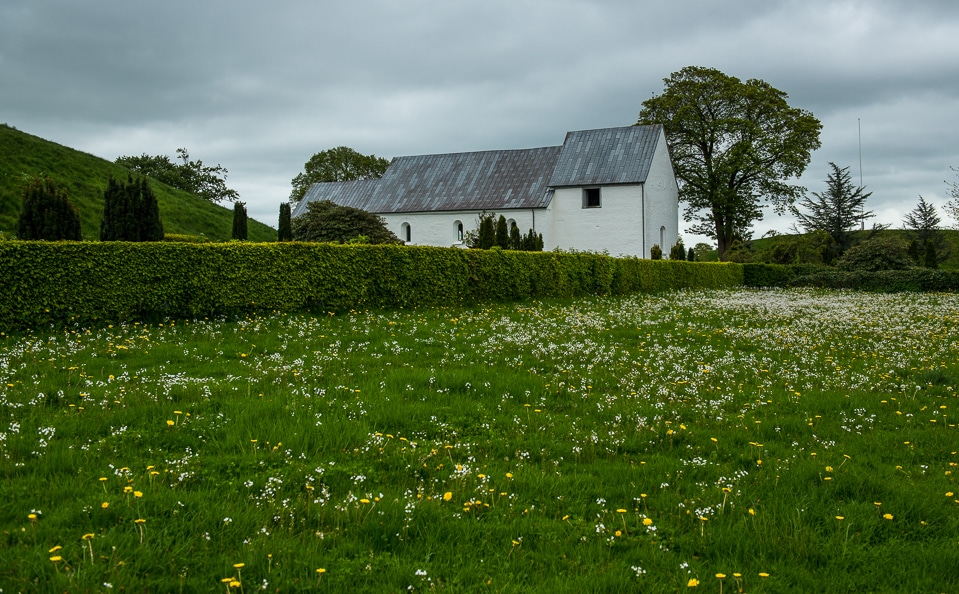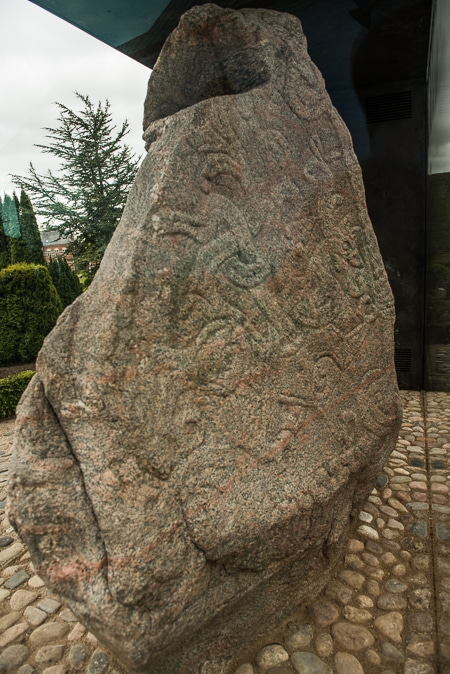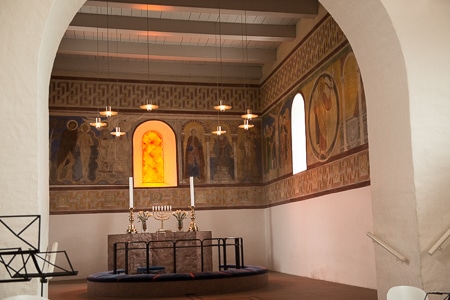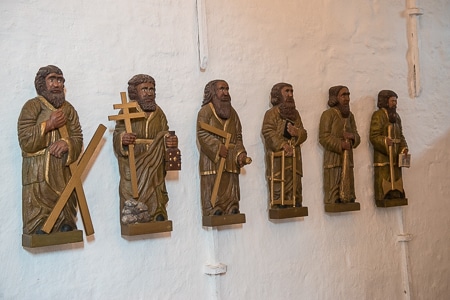
The burial mounds, rune stones and church at Jelling, Denmark make up another Unesco World Heritage site that takes some concentration and research to come up with the love that so many other Unesco sites engender without effort.

The mounds, well, are mounds of dirt. And even if you know there are some kings and queens from a thousand years ago buried in there somewhere, grassy mounds of dirt they remain. It would help a lot if there were some sort of interpretive center there, with some archeological narrative. I think they're working on it, but from the looks of the building off to the side of the place, it's a way off.
The rune stones are interesting, of course, but they've worn in the harsh Danish weather for a thousand years, and so are hard to view with any sense of what they originally looked like. They've now been encased in glass, so you can't even get a very close look. And many looks you can get are foiled by reflections.
The church, originally built about 1000 years ago, is now the whitewashed nondescript country church that the northern Lutherans seem to favor. From the looks of it, it could have been built in the late 19th Century and painted white every year since. Not much is left of what might have distinguished it before. Some old carvings on one wall, and some frescoes of indeterminate age are the only decoration. Again, a little didactic help would be appreciated, but, alas, is unavailable.
The church, btw, is still in use. We got there just as a service was ending. It's surrounded by a modern graveyard, which is the best kept graveyard I've ever seen. It features extensive, artful, landscaping, and seems to be manicured by a full time staff, a few of whom we saw puttering around the various graves as we walked the site.
If you're interested, here is some more info from Unesco about the site.


The Jelling Mounds, Runic Stones and Church are a UNESCO World Heritage site in Denmark. Click the link to see a list of all UNESCO sites in Denmark, with links to all the sites we have visited.
Up Your Travel Skills
Looking to book your next trip? Use these resources that are tried and tested by us. First, to get our best travel tips, sign up for our email newsletter. Then, be sure to start your reading with our Resources Page where we highlight all the great travel companies and products that we trust. Travel Accessories: Check out our list of all the accessories we carry to make getting there and being there a lot easier. Credit Cards: See our detailed post on how to choose the right travel rewards credit card for you. Flights: Start finding the very best flight deals by subscribing to Thrifty Traveler. Book your Hotel: Find the best prices on hotels with Booking.com. See all of the gear and books we like in one place on our Amazon shop.Got a comment on this post? Join the conversation on Facebook, Instagram, or Threads and share your thoughts!


Comments are closed.